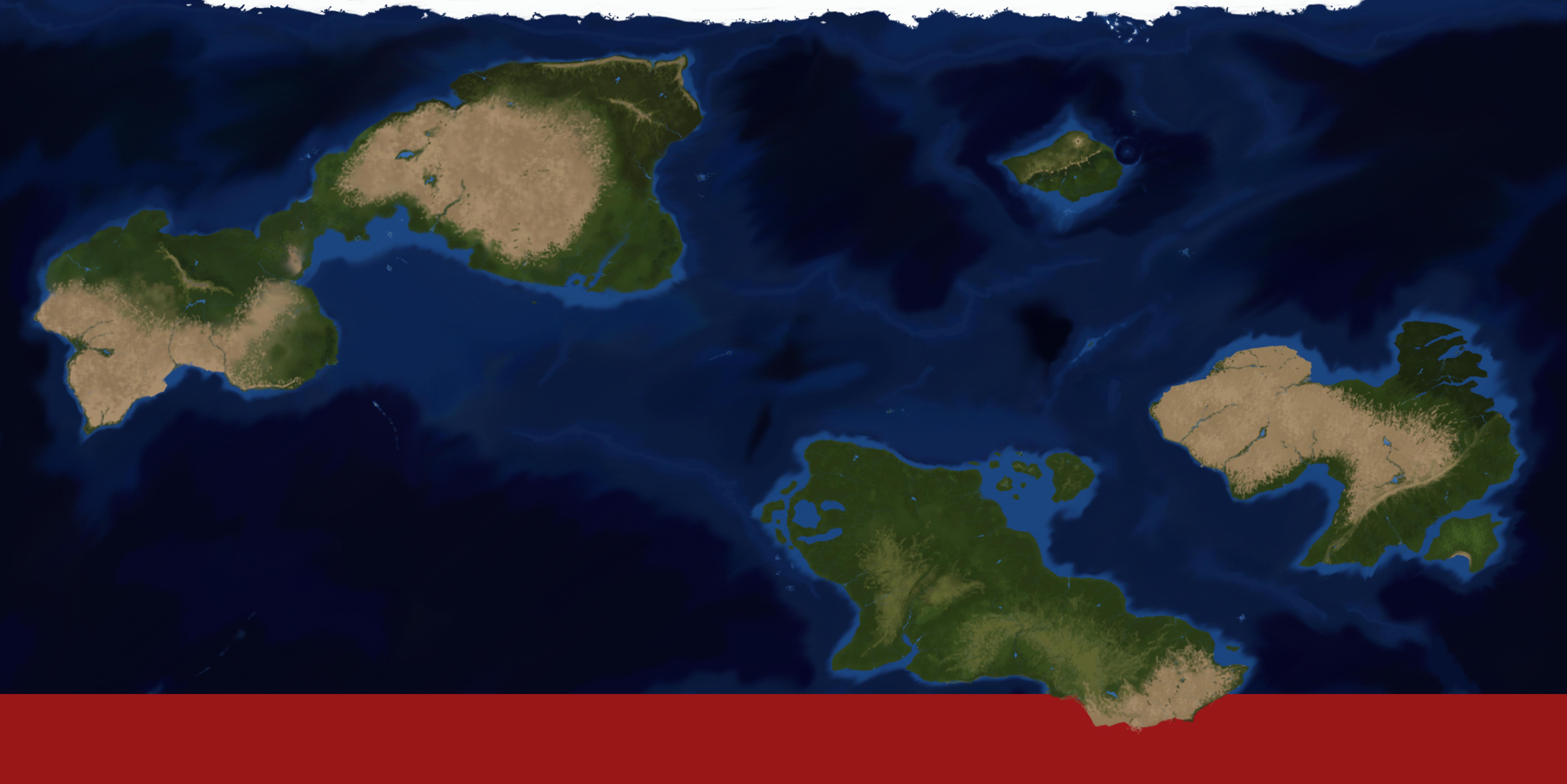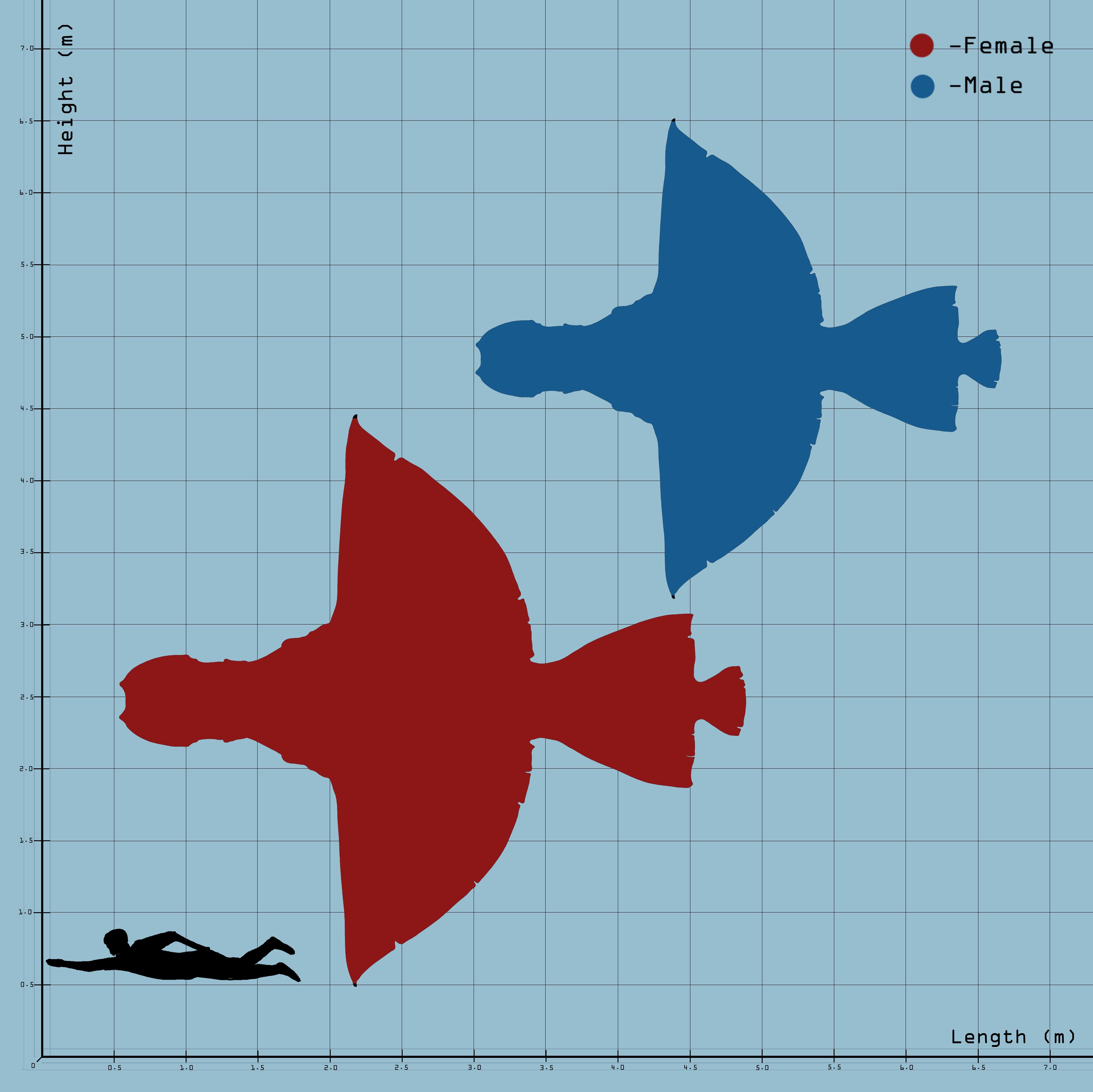Hypnotic fin Sitaquatia
Dimicroceratometoposichtys platýfíltrus is a species of Tetraperfluoichthyne Cylindrocephaloid amphibian from the southern Nuwadi Ocean.
The animal lives in small pods of a few specimens each, sifting the water for nutrients while keeping at a distance from conspecifics.
The peculiar feeding swimming style visible in many members of its subfamily make the most out of the four filter morphotype, possibly a reason why this subfamily is more abundant than the six and ten filter morphotype seen in its sister taxa.
With a larger filtration surface area and less filters, the animal can more efficiently filter the water for microbial organisms, maximizing the filtering efficiency by swimming spirally, constantly shifting the filter position and catching water from all directions, not only from the dorsal and ventral sections.
The very characteristic purple spots and stripes along the fins are not usually seen in the animal when relaxed.
When threatened, the species will brighten the colours of the fins, creating the iconic marks along the fins to intimidate potential predators, opening the fins to appear bigger.
The animal communicates with conspecifics through the use of chemical signals and small variations in the colour of head and neck.
Although not very common, the animal can be found in several markets smoked or dried.
Usually an accidental catch, on the Leviathan Islands the public smoking of the species is always a joyful occasion, especially in the colder months, when food is scarce.
The cooked animal will be hanged to a hook in the center plaza, where several cooks will cut thin slices of the meat to make into sandwiches; the latter are then laid on the long ring-shaped table closing the area and people can freely pick up any number of those for free as this is a public event paid by the local municipality.
Basic Information
Anatomy
- Head rounded with two small hornlets on the snout, eye very large compared to the head.
- Neck long, four wide filters growing from the base of the neck to the first section of the body.
- Pectoral fin small and rounded.
- Dorsal and Anal fins mirrored.
- Dorsal I and Anal I fins veiled and semi-circular.
- Dorsal II and Anal II veiled and subtriangular.
- Presence of a small Eucaudal fin at the end of the Gill Tail.
- Gill Tail long and high, ending abruptly.
- Gill Fan barely noticeable, with incredibly low ridges and a very smooth caudal drop.
Genetics and Reproduction
Mandatorily monogamous species.
The species will mate in early spring when most of the large underwater flowering plants bloom.
D. platýfíltrus mates in already predetermined couples, signalling their partner their mating disposition through the growth of small bumps along the body and head and the bright colouration of fins and neck; during this phase, the hornlets will momentarily grow to be longer than during the rest of the year.
The animal will nest in blooming giant flowers, with every female laying the eggs in the same nesting location in a communal nest, each one laying around seven to eighteen eggs.
Once the fertilized eggs have been laid, the females will proceed to lay decoy eggs on other flowers; these eggs have a stronger chemical presence and appear more inviting than the fertile ones.
The latter are laid away from the real nest so that scavengers will more likely be lured away from the real nesting site, giving the young higher probability of hatching unscathed.
The flowers will close a few days after the animal's passage as the species acts as a pollinator for the plant.
The flower releases a cloud of pollen when it spots and hears the arrival of the species; the females laying the eggs and moving about close to the flower pass the pollen from plant to plant.
The eggs will hatch inside the closed flower in conjunction with the plant's maturation period.
The hatchlings will instinctively swim down into the canals the plant formed into the flower stalk, where they'll be covered in the plant's seeds; the canals run a short distance from the flower and into the open sea below, where the young will immediately start filtering for nutrients.
The seeds will detach themselves from the young when the sticky substance that keeps them glued to it is consumed; more than enough time for the young to be a discrete distance from the mother plant.
The other flowers with no fertilized eggs will use other animals such as scavengers to do the same job as the hatchlings, although with lesser efficiency.
Growth Rate & Stages
Ontogenesis not very visible in the species.
Loss of natal aculeus four months after birth.
Ecology and Habitats
Epipelagic species found at depths in the water column between 10 and 100 m.
It needs lots of light to properly feed, keeping to the photic zone where most of the phyto- and zoophytoplankton can be found.
Dietary Needs and Habits
Filter feeding species sifting the water for microbial organisms.
It feeds mostly on Phyto- and Zoophytoplankton of the photic zone.
Biological Cycle
Periannial species with few dips in activity year long.
Additional Information
Social Structure
Social animal living in small pods.
Social interactions are very limited, communicating with other members through chemical signals and changes in the colour of head and neck.
Domestication
Impossible to keep in captivity due to space requirements and the quantity of nutrients needed for it to sustain itself.
Uses, Products & Exploitation
Of minor human interest, the species is seldomly accidentally caught by fishermen and cooked as a low fat meat.
Perception and Sensory Capabilities
Good eyesight, moderately good hearing, good chemioreception.
Symbiotic and Parasitic organisms
Afflicted by filter parasites and drinker worms.
Scientific Name
Ithmòsia; Euithmòsia; Cylindrocephaloidea; Tracheocolumidae; Tetraperfluoichthynae; Dimicroceratometoposichtys; D. platýfíltrus
Lifespan
46 Years
Conservation Status
Least Concern: no measures underway to protect the species.
Population Trend: STABLE
Average Weight
230-500 kg
Body Tint, Colouring and Marking
Azure to silver cody coluration.
Light grey band over the eye, in the frontal section of the head and bordering the fins.
Purple stripes and dots over the fins only when the animal feels threatened.
Remove these ads. Join the Worldbuilders Guild












Take away from me these underwater nope-birds!
World Anvil Founder & Chief Grease Monkey
Twitter | World Anvil Changelog
“No act of kindness, no matter how small, is ever wasted.” - Aesop